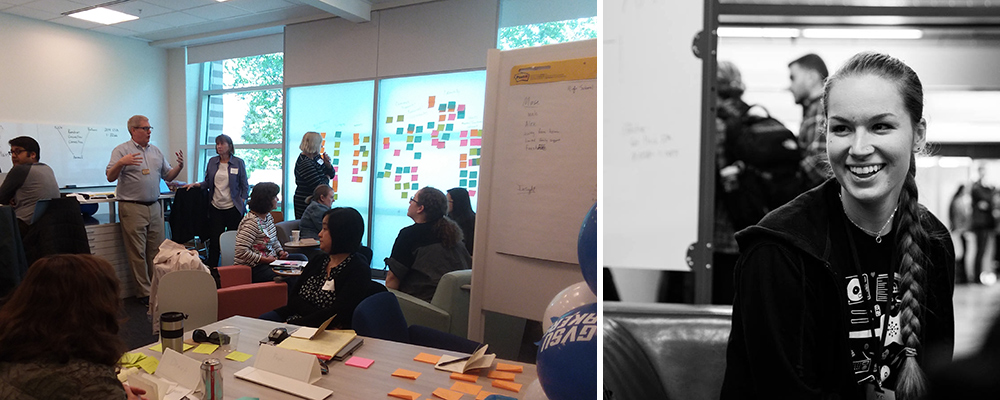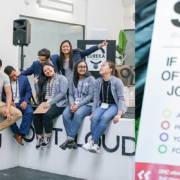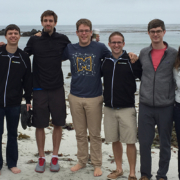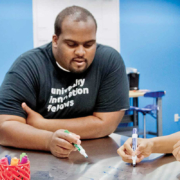Redesigning Engineering
Fellows collaborate with faculty and administrators to redesign and create courses at their schools. This story is an excerpt from Designing for Change.
Kathryn Christopher found herself in a unique position at Grand Valley State University. She had completed a bachelor’s degree in product design and manufacturing engineering and was one year into her master’s degree when she was offered a full-time Visiting Faculty position. She received the offer for the position, which included teaching freshman engineering courses, two weeks before the semester started.
“It took me less than a minute to say yes,” she said.
As a Fellow, one of the projects had Kathryn focused on was incorporating the design thinking process into freshmen engineering curriculum. She spent several years on this but was unable to change the curriculum, which she had come to realize was a slow and challenging process.
Now a faculty member, Kathryn finally found herself in a position to start making that change. In her first semester, she was scheduled to teach a freshman course that she felt would be a good fit for the design thinking process: a project-based course in which students would create a robot. The project was a good one for their level of knowledge, she said, but the class structure didn’t provide a design process to help them.
“I wanted to help make them better teammates, students, and engineers by exposing them to a design process used in the real world in a context that was as close to a real-world design project as possible,” she said.
This also happened to be the year the course was up for review. Kathryn began discussing changes that she wanted to make. In contrast to her attempts as a student, Katheryn was surprised that the committee agreed to let her to design a new set of modules and lectures to incorporate a design process into the course.
“I did so, and the changes and additions were incorporated the next semester,” she said. “By the next year, every single engineering student in GVSU’s engineering program would be exposed to the design thinking process in their first year as an engineering student.”
Since her first class redesign, Kathryn has been able to incorporate other student-generated projects into the curriculum, which she said the students have enjoyed.
She has found that, through this work, students are being exposed to different parts of engineering sooner, and that they are gaining independent critical thinking and problem solving skills sooner than they previously would have.
“The design thinking process shows engineering students that being an engineer is much more than simply doing CAD, crunching numbers, or sitting alone and coding,” she said. “It is about collaboration, problem solving, learning and growing, and figuring out what to do next. Students don’t often understand that empathy, compassion and relating to humans are such important parts of engineering design, and as they discover this, it helps show them that there are many more aspects to engineering and design than the perceptions people have.”










Leave a Reply
Want to join the discussion?Feel free to contribute!